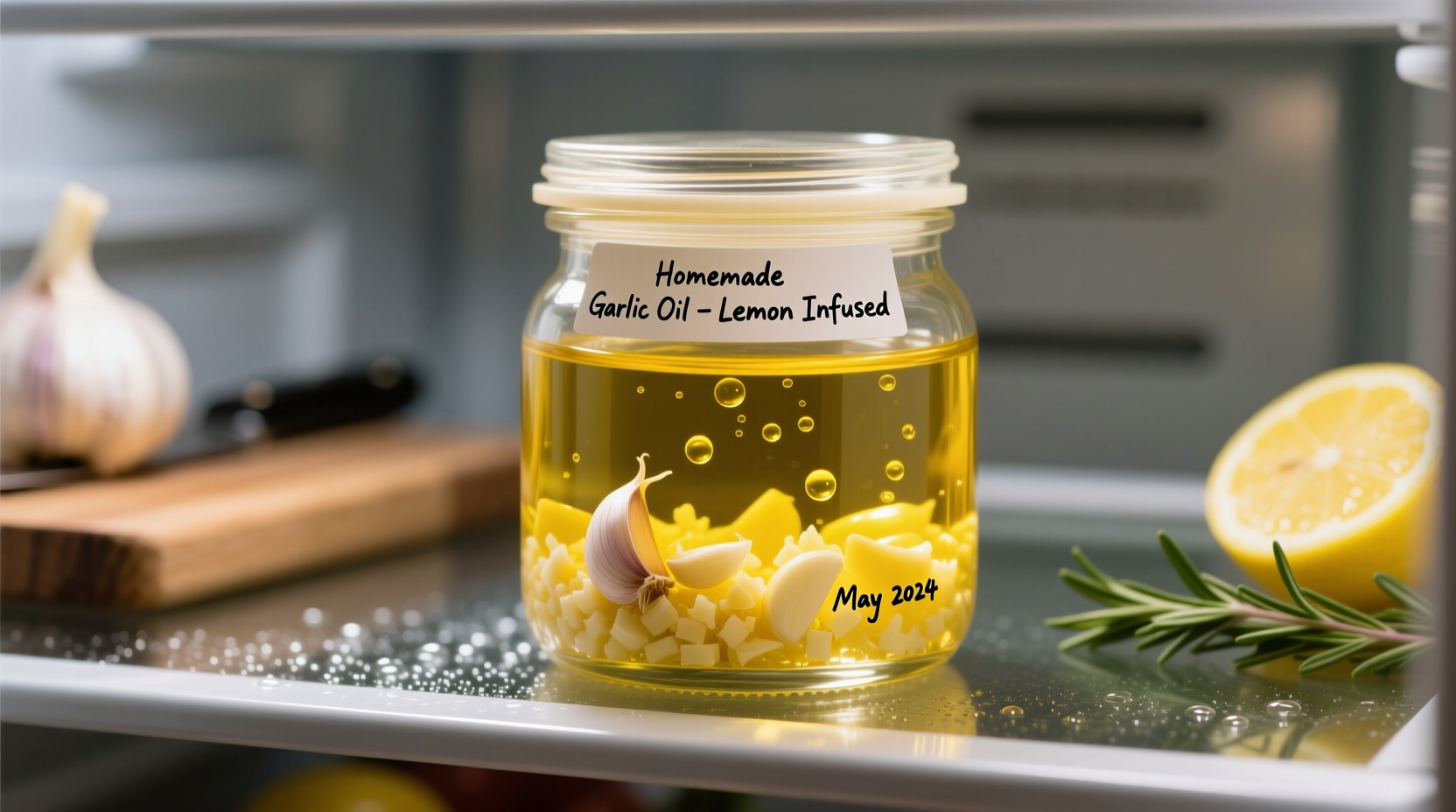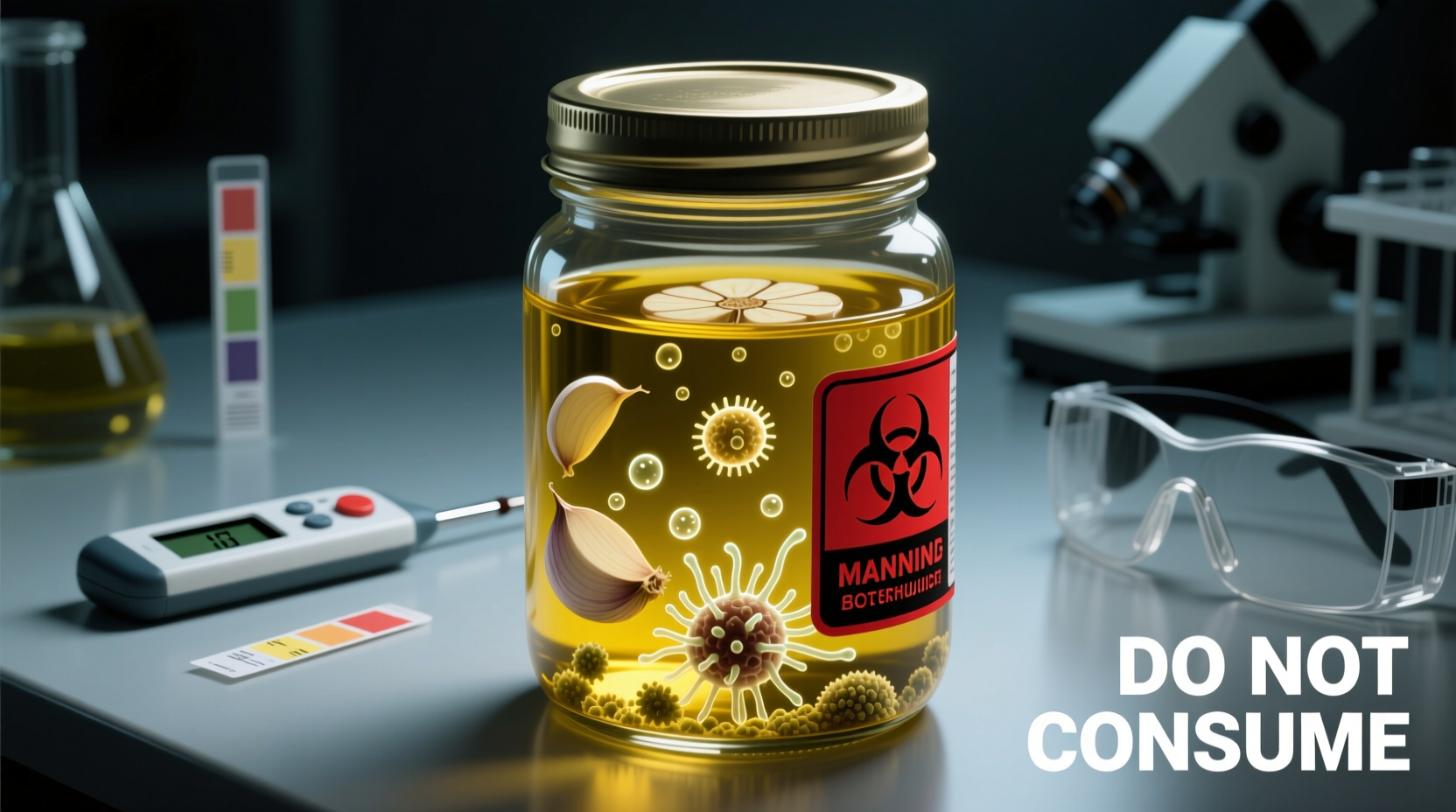Many home cooks don't realize that their beloved garlic oil could harbor a deadly threat. When prepared incorrectly, garlic oil creates the perfect breeding ground for Clostridium botulinum, the bacteria that causes botulism—a potentially fatal form of food poisoning. As someone who's taught proper oil infusion techniques to thousands of home cooks, I've seen how easily this risk is overlooked. The good news? With proper handling, you can safely enjoy homemade garlic oil without fear.
Why Garlic Oil Poses a Botulism Risk
Garlic itself contains Clostridium botulinum spores that naturally occur in soil. When you submerge garlic cloves in oil, you create an anaerobic (oxygen-free) environment where these spores can germinate and produce toxin. The USDA explains that "garlic-in-oil mixtures provide perfect conditions for botulism toxin production because garlic is low-acid and oil creates an oxygen-free environment" (USDA Food Safety and Inspection Service).
Unlike commercial products, homemade garlic oil lacks preservatives and proper acidification. The FDA warns that "unrefrigerated garlic-in-oil mixtures may cause botulism if the garlic-in-oil mixture is stored at room temperature" (FDA Food Code).
Safe Preparation Methods That Prevent Botulism
Understanding the science behind the risk allows you to implement effective prevention strategies. Here are three proven methods for safe garlic oil preparation:
| Preparation Method | Acidification Required | Refrigeration Required | Safe Storage Duration |
|---|---|---|---|
| Raw garlic in oil | No | Yes | 4 days maximum |
| Acidified (pH < 4.6) | Yes (1:1 vinegar/lemon juice to oil) | Yes | 3 weeks |
| Commercially prepared | Yes (properly processed) | No (until opened) | Check expiration date |
Step-by-Step Safe Garlic Oil Preparation
Follow these professional techniques to eliminate botulism risk while preserving flavor:
- Acidify properly: For every cup of oil, add ¼ cup lemon juice or vinegar (5% acidity). This lowers pH below 4.6, preventing toxin production.
- Use fresh garlic: Older garlic has higher spore counts. Peel cloves immediately before use to minimize exposure.
- Refrigerate immediately: Store at 40°F (4°C) or below. Never leave garlic oil at room temperature for more than 2 hours.
- Use within timeframe: Consume acidified oil within 3 weeks, non-acidified within 4 days.
- Discard properly: If oil develops off odors, cloudiness, or bubbles, dispose of it safely by boiling for 10 minutes before discarding.

Recognizing Dangerous Garlic Oil: Warning Signs
Botulinum toxin doesn't change the appearance, smell, or taste of contaminated oil. However, these signs indicate potential contamination:
- Oil stored at room temperature for more than 4 days
- Garlic cloves showing discoloration or sliminess
- Bubbles rising from submerged garlic
- Cloudiness in previously clear oil
- Swollen container from gas production
The CDC emphasizes that "when in doubt, throw it out" is the only safe approach with potentially contaminated garlic oil (CDC Botulism Information).
Safe Alternatives for Garlic Flavor
If you're concerned about risks, consider these safer alternatives:
- Fresh garlic paste: Mix minced garlic with a small amount of acid (lemon juice or vinegar) and use immediately
- Dried garlic powder: Completely dehydrated with no moisture for bacterial growth
- Refrigerated commercial products: Look for "keep refrigerated" labels indicating proper preservation
- Short-term infusions: Steep garlic in warm oil for cooking, then use immediately without storage
What to Do If You Suspect Contamination
Botulism symptoms typically appear 12-36 hours after consuming contaminated food and include:
- Double vision or blurred vision
- Drooping eyelids
- Slurred speech
- Difficulty swallowing
- Muscle weakness progressing downward
If you experience these symptoms after consuming homemade garlic oil, seek immediate medical attention. The FDA states that "botulism is a medical emergency that requires hospitalization" (FDA Consumer Advice).











 浙公网安备
33010002000092号
浙公网安备
33010002000092号 浙B2-20120091-4
浙B2-20120091-4